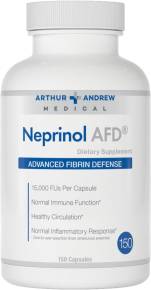Gluten is a combination of proteins found in wheat, rye, and barley. For some Americans, possibly as many as 1 in 133, gluten is a problem.
The reason is a genetically based autoimmune condition called celiac disease. In this condition, the body reacts to proteins in gluten as though they were harmful. The immune responds by producing inflammation within the small intestine.
\
Inflammation is normally a healthful mechanism for fighting off harmful invaders, but in the case of celiac disease, it is misdirected. The inflammation damages or destroys villi, the tiny, fingerlike protrusions lining the walls of the intestines. Without healthy villi to deliver nutrients into the bloodstream, malnourishment results—no matter how much food one eats.
The malnourishment caused by celiac disease can lead to diarrhea, gas, bloating, constipation, or any of more than 300 other symptoms—and possibly to more serious problems such as anemia, infertility, or cancer.
Getting Diagnosed
If your physician suspects you might have celiac disease, diagnosis typically takes place in three steps. The first is usually a blood analysis that tests for high levels of certain antibodies typical of celiac. If the blood test results warrant further examination, your doctor may recommend an intestinal biopsy, an outpatient procedure that removes a small amount of intestinal tissue for evaluation. Should the biopsy reveal damaged villi, then the last and conclusive test is undertaken: the gluten-free diet.
A celiac patient who follows a gluten-free diet—and stays away from wheat, rye, and barley in all their forms—stands an excellent chance of preventing further damage to the intestine wall. The villi will heal or grow back and nutritional deficiencies can be corrected.
Gluten Sensitivity
What if the diagnosis is negative, yet you still feel uncomfortable after eating bread, cereals, or pasta? As many as one person in seven experiences what’s called a wheat intolerance. Unlike celiac disease, the symptoms of wheat intolerance may not appear for two or three days after ingestion, and that makes the condition hard to diagnose.
Symptoms may include bloating, cramping, diarrhea, flatulence, or constipation. Skin rashes are a possibility, as well as food cravings, tiredness, chronic fatigue, or just feeling generally unwell. Even depression can stem from wheat intolerance.
But remember: Other food allergies can also produce uncomfortable symptoms. An elimination diet recommended by your doctor will help you sort out the possibilities.
Where to Start
If you decide to go gluten free, the best way to begin is to remove from your diet wheat, barley, rye, or hybrids of those grains. All other foods are safe, with the possible exception of oats. Unless they are processed in a gluten-free facility, oats can easily become cross-contaminated—with gluten finding its way into oats during harvesting, shipment, or processing. (For that reason, several producers of oats certify their products to be “Gluten Free.”)
But giving up wheat leaves lots of tasty alternatives that can be made into a host of delicious meals. Consider, for example, corn, millet, rice, sorghum, amaranth, quinoa, buckwheat, wild rice, and teff, a grain native to Ethiopia. (In this country, it’s possible to find teff in the form of either grain or flour.) Also give puffed rice, cream of rice, rice flakes, cornmeal, hominy, and grits a try.
Enjoy the ever-expanding variety of gluten-free foods now available. Be sure to take a look at the breads, bread crumbs, flours, cakes, cookies, cereals, pizza dough, and baking mixes labeled “Gluten Free” that are becoming ever more popular, even among those without a wheat sensitivity.
Many national brands are now carrying gluten-free products that make life easy for consumers wishing to take the gluten out of their diets.




